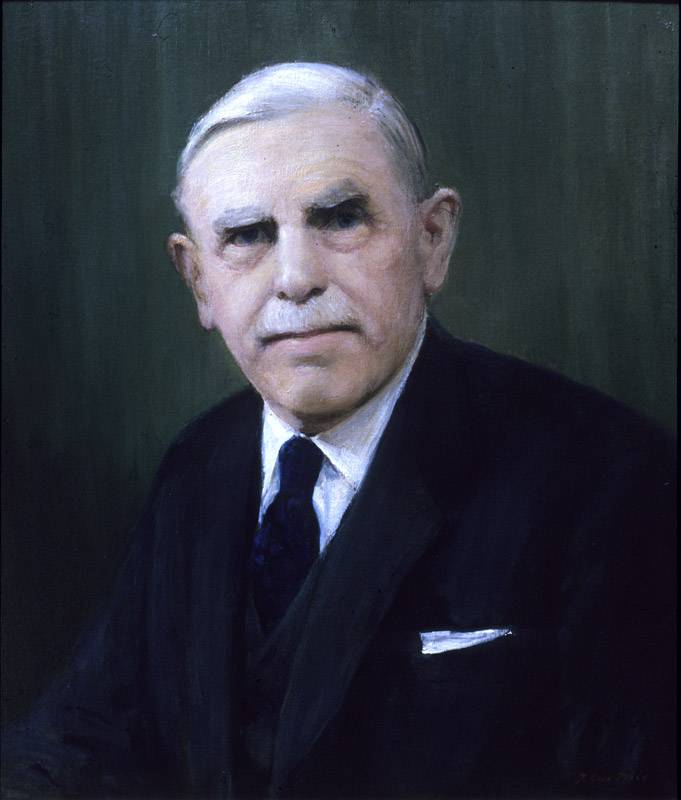Above: An Allegory of Avarice Jan de Herdt (fl.1646-72) oil on canvas, 158 x 193 cm (62″ x 76″), signed: J D[e] Herdt F[..]d 1672
Within the walls of the Castle, the exuberant spirit of the Victorian age is faithfully brought to life. The suite of three reception rooms, the Ante Room, Drawing Room, and Library, with their patterned carpets, yellow silk wall hangings and lavish gilded pelmets, all capture a sense of 1830s splendour. Throughout the Castle, the colour schemes provide a fine backdrop for a diverse collection, which includes the internationally important seventeenth-century Decius Mus tapestries. Explore the collection of Ormonde family portraits, several of which take pride of place in the great Picture Gallery, with its hammer-beam roof that features hand painted Pre-Raphaelite figures and naturalistic scenes. The Oriental fashion of the nineteenth century is represented by the Chinese Bedroom and by various exotic furnishings found throughout the building.
James Arthur Norman Butler (1893-1971), 6th Marquess of Ormonde by Hon. Rosa Price
James Arthur Norman was the brother of James George Anson Butler, 5th Marquess of Ormonde (1890-1949). They were sons of James Arthur Wellington Foley Butler, 4th Marquess of Ormonde, and Ellen, daughter of General Anson Stager (USA). The 6th Marquess succeeded to the titles in 1949. He married Jessie Carlos, daughter of Charles Carlos Clarke (USA), In 1967 the 6th Marquess handed the castle over to the Kilkenny Castle Restoration Committee for a sum of £50. Shortly afterwards, the castle was taken into State care under the National Monuments Section of the Office of Public Works.
James Butler (1610-1688), 1st Duke of Ormond, KG, Lord Lieutenant of Ireland by Sir Peter Lely.
Wearing robes of the Order of the Garter, Ormond holds the wand of office of Lord Steward of the Household in his right hand.
A rocky Italianate landscape in style of Pandolfo Reschi (1643-99). Oil on canvas.
In the foreground there is a rocky landscape with figures, and horses feeding to the left. A mountain stream flows over rocks. Behind, a landscape with buildings opens onto a distant mountainous scene. This type of landscape was inspired by the work of the Italian artist Salvator Rosa who painted dramatic mountain scenery, often with banditti and muleteers. Rosa’s paintings were very popular with the Grand Tourists who visited Italy during the eighteenth and nineteenth centuries.
Walter Butler (1770-1820), 1st Marquess of Ormonde, 18th Earl of Ormonde, 11th Earl of Ossory, 10th Viscount Thurles, 24th Chief Butler of Ireland by Sir William Beechey (1753-1839). Oil on canvas; OPW Kilkenny Castle Collection.
An impressive full-length portrait showing the earl wearing Peers Robes and the Order of St Patrick. The portrait was painted in 1805, at the time of Walter’s wedding, by one of the most fashionable portrait painters of the day.
Walter was said to have been an extravagant spender, moving in the circle of the Regent, Prince George (later George IV). His Irish estates were worth £22,000 per annum in 1799, and in 1811 Parliament granted him £216,000 as compensation for the resumption by the Crown of the hereditary prisage of wines, granted to his ancestor in 1327.. In 1805, he married a wealthy heiress, Anna Maria Catherine Price-Clarke. He was created Marquess of Ormonde in 1816.
Below: Storm at Sea (Mid-day), school of Claude-Joseph Vernet (1714-89) Oil on Canvas; Kilkenny Castle Collection.
THE SURTOUT DE TABLE CIRCA 1805. Attributed to Rundell, Bridge & Rundell, possibly supplied by Alexis De Caix.
Rundell, Bridge & Rundell were the foremost Royal goldsmith known to have produced outstanding pieces in bronze, this magnificent piece was designed in the French Empire taste in vogue among the fashionable Regency circles.
This gilt-bronze surtout de table divides into five mirrored sections and measures 8’4” in length the surtout has a pierced gallery on paw feet. Below the gallery a cast double coronet is interspaced by plaques with the coat of arms for the Marquesses of Ormonde.
Walter Butler (1770-1820), 1st Marquess of Ormonde, 18th Earl of Ormonde, and his wife Anna Maria Catherine Clarke. Ormonde was an important patron of Royal Goldsmiths Rundell Bridge and Rundell and commissioned a fine silver dinner service in 1808. Part of this was allocated in 1982 to the Royal Pavilion at Brighton by the English government.
Anna Maria Catherine Price-Clarke (1789-1817), Marchioness of Ormonde by Sir William Beechey (1753-1839). This portrait is a companion piece to that of Walter Anna’s Husband painted and the cost recorded for the pair of paintings in Beechys’s account book of 1809 was £105.0s. 0d.
Anna was born into a privileged family and lifestyle; she grew up at Sutton Hall located on the fringes of the UK Peak District in England. On St Patrick’s Day, in 1805, at the age of sixteen Anna married Walter Butler (1770-1820), 1st Marquess of Ormonde. Their married life lasted twelve years until Anna’s death in 1817. As an only daughter and heiress of Job Hart Price and his wife Sarah, Anna’s inheritance added enormous wealth and extensive lands in England to the Ormonde Estates including Sutton Hall, Chilcote Hall, Somersall Hall and the Manor of Ulcome in Kent.








